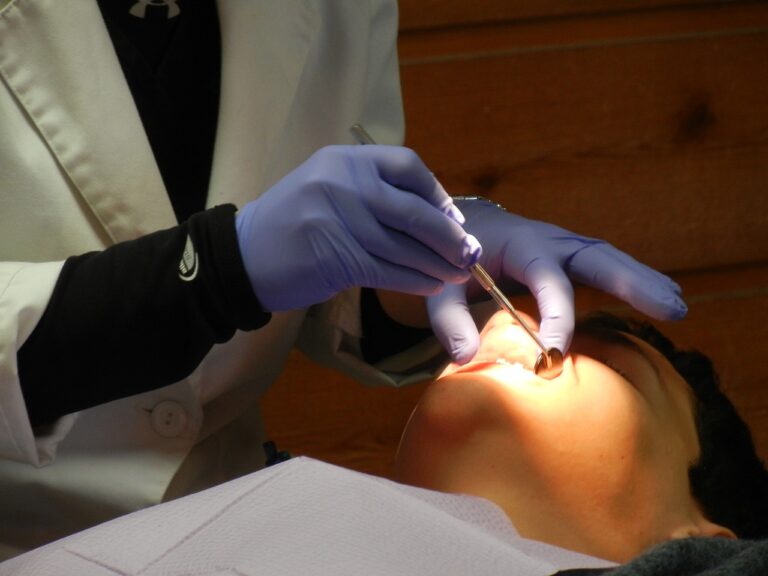Dental Instruments and Their Uses
Today, we will examine the most common Dental Instruments and Their Uses. The dental instrument is a device used by dental practitioners to care for a patient’s teeth. They differ based on their uses. If you have ever visited a dentist, you must have seen some of the instruments used in dentistry and how the dental instruments are used.
You might have even heard the dental practitioners mentioning the names of the dental instruments. You would be wondering how the dentist can identify their instruments. Although dental instruments usually look alike but they do have distinguishable features.
They are usually grouped into their various functions which include the following; visualizing, scaling and polishing, dental filling, placing a filling substance in the mouth. We will be listing the basic Dental Instruments and Their Uses below.
Most Common Dental Instruments and Their Uses
1. Dental Drill
This is one of the dental instruments for surgical procedures. It is majorly utilized on the teeth cavity. When used it transmits vibration to the tooth. There is a need to suppress pain before use. Anesthesia is mostly used for pain.
Functions of the dental drill
It is used for extracting infected teeth. Clove is a type of food that treats toothache.
It has a way of producing water that maintains the temperature around it.
2. Dental mirror
It is also called a mouth mirror. The dental mirror has a handle and a round head where the concave mirror is embedded. They are made in various sizes which are 16mm, 18mm, 20mm, and so on.
The function of a Dental mirror.
It is used for reflecting light on the teeth
It is used for retracting tissues surrounding the teeth
It facilitates the visualization of the teeth easily.
3. Dental Probe
This dental instrument is for observing the patient’s teeth. It is graded in millimeters (mm).
Functions of a dental probe
For estimating the extent of dental caries on the teeth.
It measures the condition of the enclosed part of the mouth
4. Suction device
This dental instrument is a device used by dentists to remove excess fluid from the mouth during operation. During dental operation, their mouth gets be messed up and that is where the function of the suction device comes in. They are different types of suction devices:
The saliva ejector: It has a curved-shaped tube that makes it easy to place over the lower teeth, thereby sucking out the fluid therein.
High-level suction device: Mostly, it is utilized when operating on a broken tooth, filling, and tartar.
Functions of suction device
It removes excess saliva from the mouth
It is used for picking out remnants of debris in the mouth
It is used for tidying up the mouth.
5. Scaler
This dental instrument is for doing a technique called scaling and polishing. They are required when tartar sticks to the base of the teeth Tartar are known as hardened plaques in the mouth. Scalers are available in various types and brands.
Function of scaler
It is used to scrape off tartar attached to the teeth.
6. Dental Syringe
A dental syringe is also called aspirating syringe. It is a dental instrument for endodontic and restorative procedures.
It is similar to the common syringe in the sense that it is used for withdrawing fluid and injection but different in size and much longer. The dental syringe can only be used in the mouth.
The Functions of a Dental Syringe
For injecting local anesthesia into the mouth
For flushing the mouth with water.
7. Dental Tray
Dental trays are made of different colors. They also vary in size and are made of materials that can be easily sterilized. Some may or may not be made together with the cover.
Functions of a Dental Tray
It is used for organizing other dental instruments
It is used for storing other dental instruments
It promotes the efficiency of the procedure carried out.
The elevated part of the tray prevents instruments from dropping to the ground.
8. College Tweezer/Dental tweezer
It is one of the instruments used in dentistry for retrieving tiny items in the mouth. It can either have a curved or straight end. Ideally, can’t be picked into the patient’s mouth with a bare hand.
There is a need for college tweezers to transfer cotton wool or other material into the patient’s oral cavity.
9. Scapel Holder
They are of various sizes and are produced with the related scalpel blade size. The scalpel blade is held within the scalpel holder to ensure safety and also to make the surgical procedure easier and faster. Scalpel handles are used along with scalpel blades to separate skin and tissues.
10. Dental Elevator
This dental instrument is commonly used for tooth removal during an oral surgical procedure. It elevates and slackens the teeth from the gum and socket before removal. It is used to exert force and luxate the teeth.
Care of instruments Used in Dentistry
The care of the instrument varies with the type of instrument itself. some instruments used in dentistry require only cleaning with repeated use. It is always advisable to comply with the instructions of the producer and the American Dental Association, which firstly group dental instruments into critical, semi-critical, and non-critical instruments.
Non Critical Instrument:
The non-critical instrument is an instrument that does not need to be sterilized. They only need to be cleaned with a disinfectant based on the extent of infections that the disinfectant can combat.
An example of a non-critical instrument is a spatula. They don’t touch blood, gum, tissue, or membranes. This reduces the infection growth on the tools.
Semi-critical Instrument:
This type of instrument is utilized for a severe procedures. They usually come in contact with tissues and membranes without penetrating them, so this, in turn, reduces their exposure to blood. This instrument requires sterilization depending on how much heat it can withstand. An example of this instrument is an amalgam condenser.
Critical Instruments
They are tools that touch blood as they perforate the tissues. They require high-level sterilization. Examples of critical instruments include forceps, bone chisels, broaches, scalpels, and dental explore.
They should be inspected every day.
It is important that the instrument is washed and gathered in a pouch before sterilizing and sterilization should be done after every procedure.
Storage of Instruments Used in Dentistry
The instrument that is duly cared for tends to last longer. After cleaning of instrument, there is a need for proper storage. They should be inspected for any changes before being stored in a dry and closed cabinet.
Conclusion
Instruments used in dentistry are more than those listed above but these are the most common Dental Instruments and Their Uses. After going through the dental instruments they won’t be strange anymore. They can only be used by the dentist and not for personal use.


